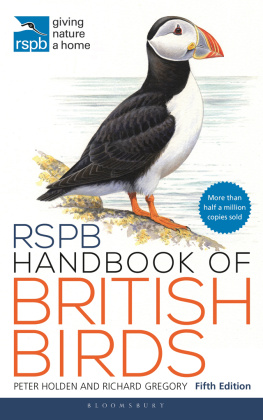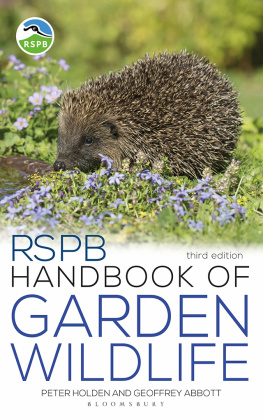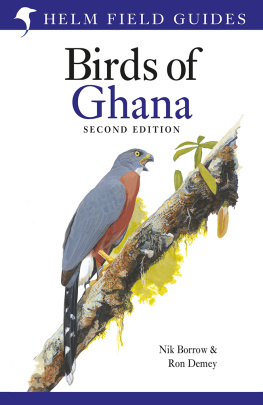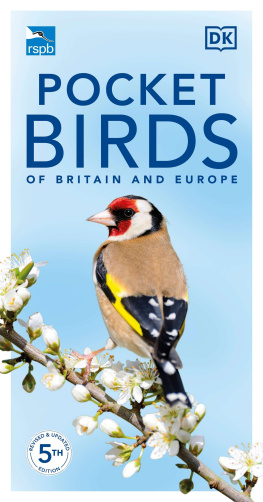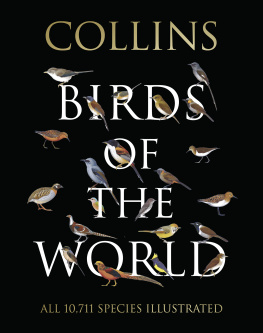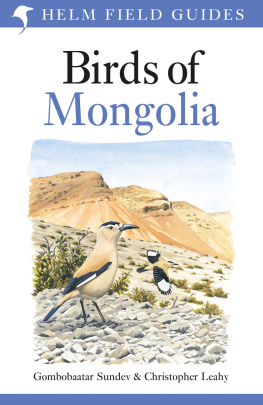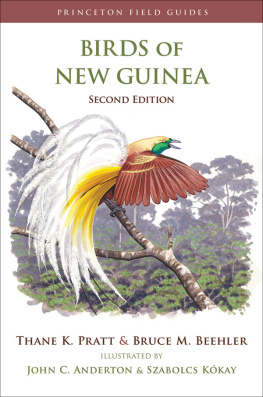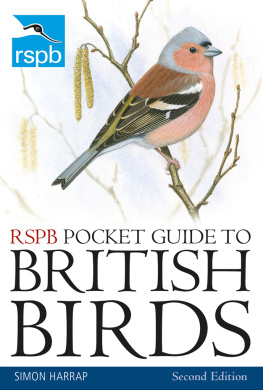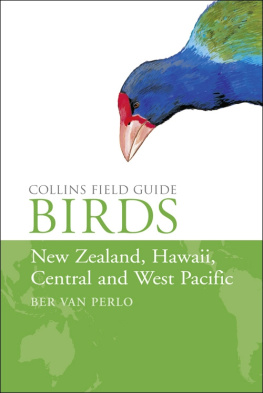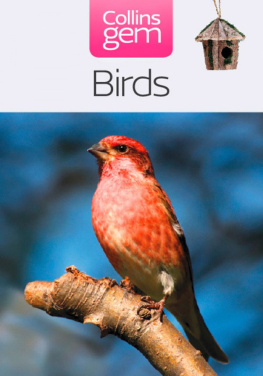
BLOOMSBURY WILDLIFE
Bloomsbury Publishing Plc
50 Bedford Square, London, WC1B 3DP, UK
This electronic edition published in 2020 by Bloomsbury Publishing Plc
BLOOMSBURY, BLOOMSBURY WILDLIFE and the Diana logo are trademarks of Bloomsbury Publishing Plc
First published in the United Kingdom, 2021
Author copyright 2002, 2006, 2010, 2014 text by Peter Holden and Tim Cleeves
Author copyright 2021 Peter Holden and Richard Gregory
Contributor copyright 2021 The Estate of Tim Cleeves
Illustrations Hilary Burn, Martin Elliot, Alan Harris, Peter Hayman, Stephen Message, David Nurney, Laurel Tucker and Dan Zetterstrm 2002, 2006, 2010, 2014, 2021
Copyright 2021 photographs as credited in captions
Cover and prelims artworks: front cover Puffin, Stephen Message; back cover from top, Yellowhammer (Laurel Tucker), Turtle Doves (Hilary Burn), Hen Harrier (Dan Zetterstrm)
Peter Holden and Richard Gregory have asserted their rights under the Copyright, Design and Patents Act, 1988, to be identified as Authors of this work
All rights reserved
You may not copy, distribute, transmit, reproduce or otherwise make available this publication (or any part of it) in any form, or by any means (including without limitation electronic, digital, optical, mechanical, photocopying, printing, recording or otherwise), without the prior written permission of the publisher. Any person who does any unauthorised act in relation to this publication may be liable to criminal prosecution and civil claims for damages.
A catalogue record for this book is available from the British Library
Library of Congress Cataloguing-in-Publication data has been applied for
ISBN: 978-1-4729-8026-7 (PB)
ISBN: 978-1-4729-8012-0 (eBook)
ISBN: 978-1-4729-8011-3 (ePDF)
To find out more about our authors and their books please visit www.bloomsbury.com where you will find extracts, author interviews and details of forthcoming events, and to be the first to hear about latest releases and special offers, sign up for our newsletters.

Published under licence from RSPB Sales Limited to raise awareness of the RSPB (charity registration in England and Wales no 207076 and Scotland no SC037654).
For all licensed products sold by Bloomsbury Publishing Limited, Bloomsbury Publishing Limited will donate a minimum of 2% from all sales to RSPB Sales Ltd, which gives all of its distributable profits through Gift Aid to the RSPB.
Contents

Acknowledgements
This is the fifth edition of a book that was originally conceived 20 years ago. The idea was to create a new, accessible guide that would provide information about all the birds commonly seen in the British Isles.
Bringing the original idea of Peter Holden and Tim Cleeves to fruition required the help and goodwill of a great many talented people. Sadly, Tim is no longer with us and is greatly missed, but we have the same access to amazing information and outstanding artwork, originally published in the Handbook of Bird Identification and produced by a number of highly-skilled bird artists.
Our thanks go to Nigel Redman who commissioned the first edition of this handbook and to Julie Bailey for her continuing support and involvement as commissioner of the subsequent editions. Marianne Taylor produced the original detailed maps, and this edition has benefited from the ever-patient co-ordination and editing of Jenny Campbell and from our new designer Rod Teasdale. Thanks also to Mark Eaton, Mark Holling, and RSPB colleagues for their expert assistance.
Much of the data for this book comes from a network of volunteer fieldworkers, past and present, whose observations and species counts have been made public through the publications of the Rare Breeding Birds Panel, the British Trust for Ornithology, the RSPB and BirdLife International. We hope this book will inspire more fieldworkers and conservationists in the future.
We thank the RSPB for, once again, endorsing this book and helping to ensure that it reaches the ever-growing audience who love nature and the countryside and want to discover more about birds and are concerned for their future.
Peter Holden and Richard Gregory

Population trends of British birds

A team of seabird survey staff and volunteers look for Manx Shearwater burrows on the Isles of Scilly (Ed Marshall/RSPB Images).
The UK is very fortunate to have an excellent set of bird monitoring programmes led primarily by the Royal Society for the Protection of Birds (RSPB) and the British Trust for Ornithology (BTO) working with many partners. These programmes allow conservationists to assess and begin to understand population changes in many of our bird species. This monitoring, in part, stems from a rich tradition of amateur naturalists contributing to biological recording and enquiries in the UK, and that tradition is thriving today. Each year, thousands of dedicated and skilled volunteers give their time to biological surveys, and the bird monitoring schemes in the UK are arguably some of the best in the world.
The BTO leads on the monitoring of the more common and widespread breeding and wintering species, namely through the Breeding Bird Survey and the Wetland Bird Survey. At the same time, the RSPB, with the assistance of the country conservation agencies and other groups, helps to organise regular national surveys of our rarer breeding birds. The Rare Breeding Birds Panel collates records of our rarest nesting birds annually. Each scheme is designed to capture vital information on different species at different times of the year. As a set, the surveys provide near-complete coverage of UK bird populations, although there remain gaps and the information could always be added to and improved. These conservation organisations are always looking for new volunteers to help with monitoring and conservation efforts (see ).
Many birds set up breeding territories each year and advertise and defend them with distinctive songs and displays. This behaviour makes the breeding season a particularly good time to count birds because birdwatchers can detect them more easily and attempt to estimate numbers. The Breeding Bird Survey involves counting birds in a large sample of specially selected grid squares across the British Isles twice each year to give a complete picture of how our common breeding birds are faring. National surveys of our rarest breeding birds tend to focus on smaller and localised areas to count or estimate the total number of breeding pairs or territorial males. For some of the UKs rarest birds living on nature reserves, skilled birdwatchers can count nearly every individual bird or nesting pair each year.
The distribution of our breeding seabirds, however, demands a different approach to monitoring. Counting millions of seabirds on far-flung cliff colonies is a challenging task, particularly for hole-nesting petrels and shearwaters that only return to their burrows under cover of darkness. Therefore, occasional complete Seabird Censuses of important sites are conducted every 15 years or so and are supplemented by annual counts from a large sample of colonies as part of the JNCC/RSPB Seabird Monitoring Programme. This approach means annual monitoring for seabirds is not as complete as it is for land birds; even so, it provides an invaluable picture of how populations are changing.

